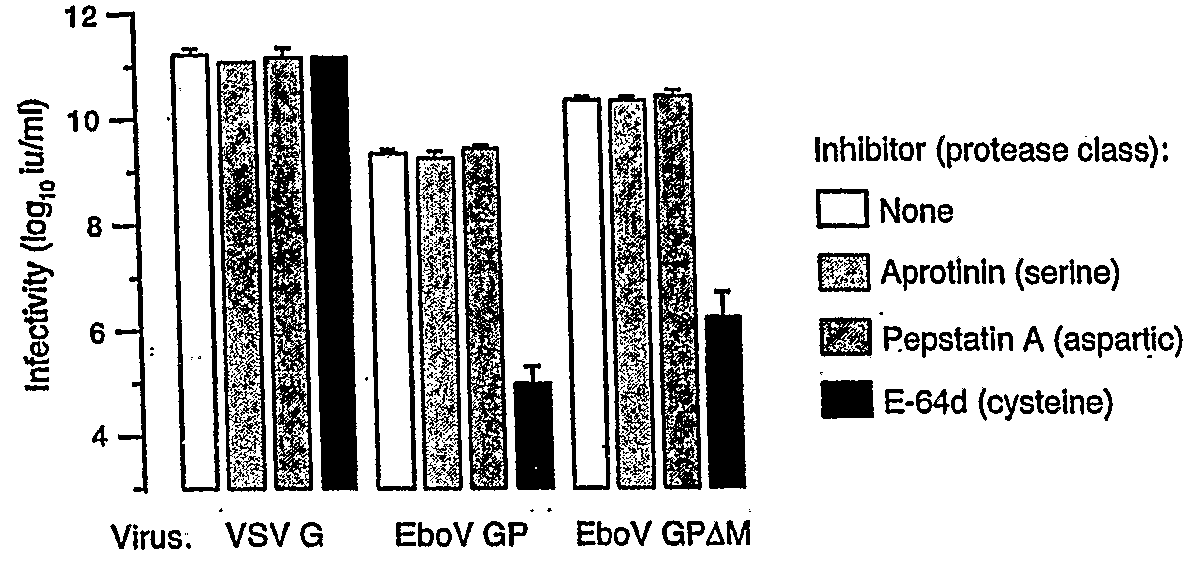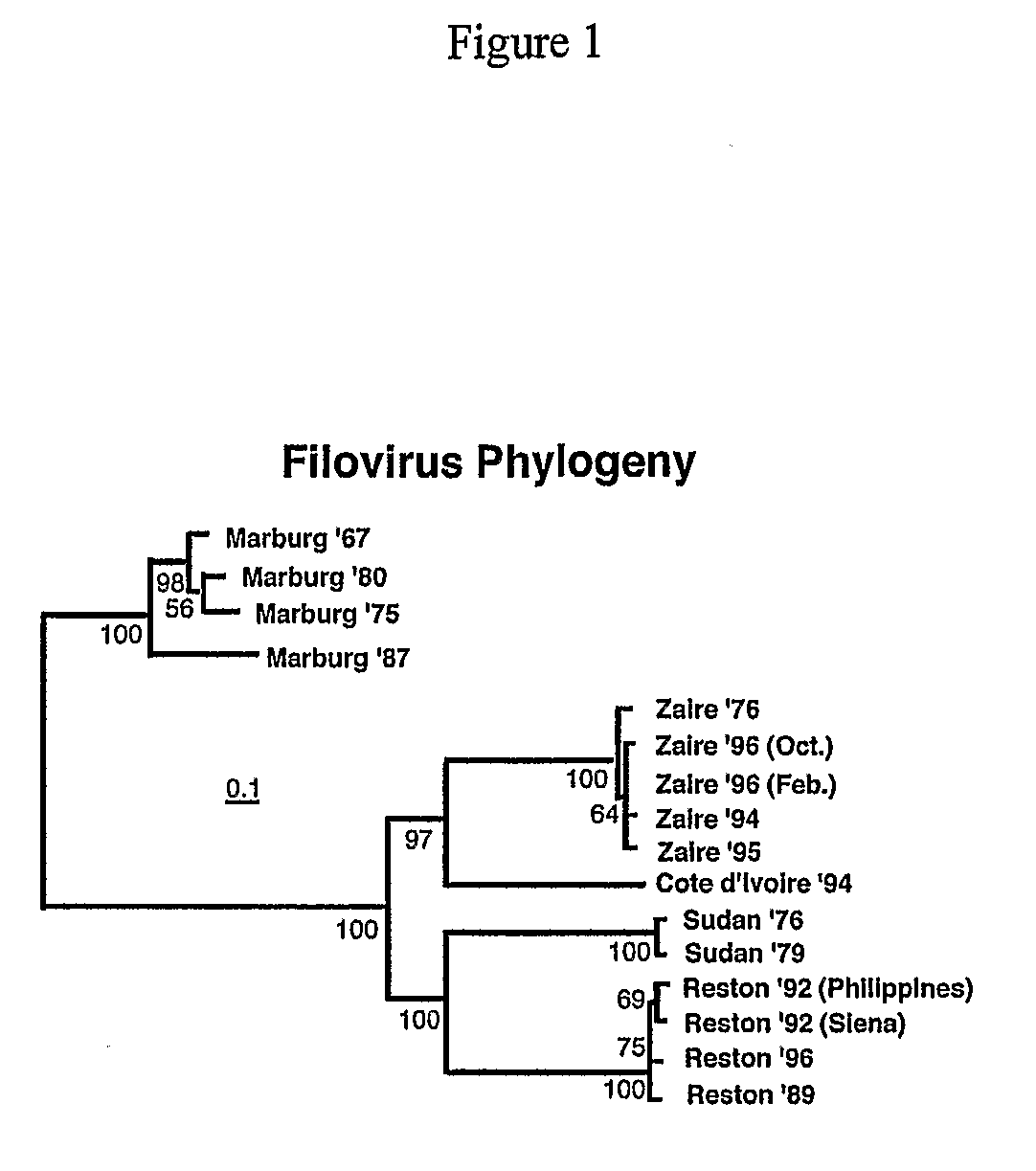Inhibitors of Enveloped Virus Infectivity
a technology of infectivity inhibitors and enveloped viruses, which is applied in the direction of antibody medical ingredients, peptides/protein ingredients, peptides, etc., can solve the problem that ph does not induce gp-dependent cell membrane fusion
- Summary
- Abstract
- Description
- Claims
- Application Information
AI Technical Summary
Benefits of technology
Problems solved by technology
Method used
Image
Examples
example 1
[0109]To test the possibility that acid-dependent endosomal proteases are host factors for EboV GP-dependent cell entry, the capacity of broad-spectrum protease inhibitors to block infection by vesicular stomatitis virus (VSV) particles pseudotyped with EboV Zaire GP-was assessed (FIG. 2A). The cysteine protease inhibitor E-64d reduced GP-dependent infection in Vero cells by ˜99.99% (FIG. 2A). In contrast, serine or aspartic protease inhibitors had no detectable effect on viral infectivity. A similar profile of inhibition was observed with more highly infectious viral particles containing a form of EboV Zaire GP that lacks the mucin-like / variable domain in GP1 (GPΔM) (Jeffers, et al., J. Virol. 76, 12463 (2002)). The effect of E-64d was specific to the EboV Zaire glycoproteins: VSV particles containing acid-dependent glycoproteins VSV G (FIG. 2A) or ALV retrovirus Env were not significantly inhibited. Furthermore, treatment of viral particles with E-64d did not reduce their infectiv...
example 2
[0117]To test whether a similar mechanism of cell entry is utilized by other filovirus species, the cysteine protease inhibitors, CA074 and FYdmk were used to block host CatB and CatL activities, and infectivities of VSV particles bearing the glycoprotein from five filovirus species, Zaire (Z), Cote d'Ivoire (CI), Sudan (S), Reston (R) and Marburg (M) were examined. The Ebola GPs lacked the mucin rich domain. Relative infectivities of these species in the presence of CA074 or FYdmk at varying concentrations are shown in FIGS. 10A and 10B, respectively (top panel). The data show that the CatB-selective inhibitor, CA074 can block infection of Ebola Zaire and Cote d'Ivoire by ˜99% at effective concentrations, while the infectivities of Reston and Marburg, are unaffected at the same concentrations of the inhibitor (FIG. 10A). Sudan was inhibited by 90%. In contrast, all filoviruses tested are blocked by 10 μM FYdmk, which at this concentration can inhibit both CatB and CatL activities (...
example 3
[0120]The experimental results provided herein further demonstrate the essential role of cellular cysteine proteases in mediating Marburg infection. From the perspective of viral phylogeny, this is particularly insightful because as mentioned earlier Marburg virus represents one of the two branches of filovirus genuses identified thus far (along with Ebola).
[0121]Marburg infectivity was measured in embryonic mouse fibroblast cells lacking both CatB and CatL (CatB− / −CatL− / −), where expression of CatB, CatL or both was reconstituted back to the cells by transfection to examine the effect of the protease on infectivity by the virus. As shown in FIG. 12, expression of either CatB or CatL or both proteases is sufficient to confer Marburg virus GP-dependent infection on mouse fibroblasts deficient in both CatB and CatL genes.
[0122]Vero cells were used to further investigate the effects of inhibiting cysteine protease activities on Marburg virus infection. Marburg virus growth, as measured...
PUM
| Property | Measurement | Unit |
|---|---|---|
| Time | aaaaa | aaaaa |
Abstract
Description
Claims
Application Information
 Login to View More
Login to View More - R&D
- Intellectual Property
- Life Sciences
- Materials
- Tech Scout
- Unparalleled Data Quality
- Higher Quality Content
- 60% Fewer Hallucinations
Browse by: Latest US Patents, China's latest patents, Technical Efficacy Thesaurus, Application Domain, Technology Topic, Popular Technical Reports.
© 2025 PatSnap. All rights reserved.Legal|Privacy policy|Modern Slavery Act Transparency Statement|Sitemap|About US| Contact US: help@patsnap.com



